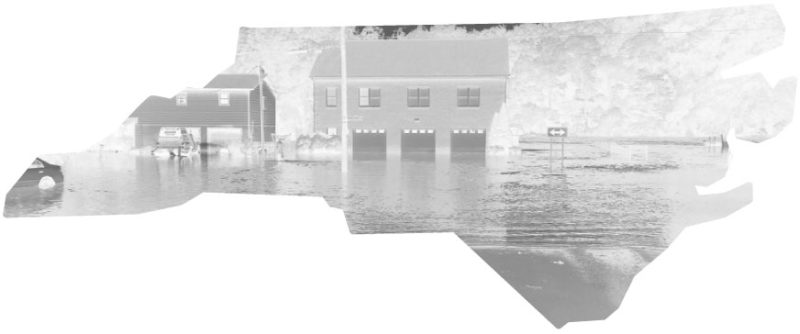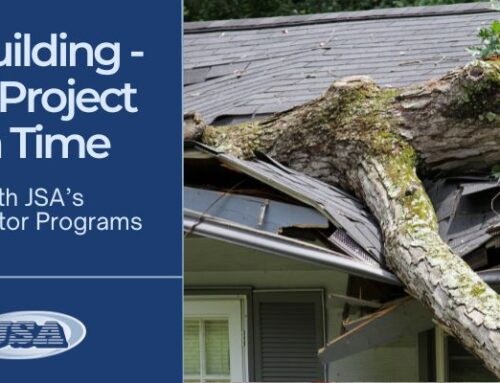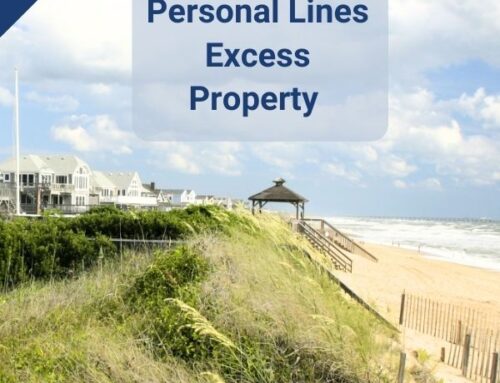The AppState R.I.S.E. program in Boone, NC, created an in-depth industry white paper on North Carolina Flood Risk entitled “Water is Coming: Planning for the Future of North Carolina Flood Risk.” It was published in June of 2019 on the North Carolina Surplus Lines Association (NCSLA) website.
This report, conducted in large part by undergraduate students, examines North Carolina’s flood risks throughout every county in the state and explains the need for wide-spread flood insurance through the NFIP and expansion of the private flood insurance market. It was made possible by Appalachian State R.I.S.E. (Risk Initiative for Student Engagement) Research Initiative – a student research/teaching/learning opportunity through which teams conduct research on current trends and issues. R.I.S.E. is a collaboration between the faculty of Appalachian State University Brantley Risk & Insurance Center and the Department of Finance, Banking & Insurance.
Leading Contributors:
Catherine Lattimore: Senior Student in Actuarial Science, Appalachian State University
Dr. Lorilee Medders, PhD: Freeman Distinguished Professor of Insurance, Appalachian State University
Additional Contributors:
Harrison Cameron: Junior student in Risk Management & Insurance, Appalachian State University
Ellen Collins: Junior student in Actuarial Science, Appalachian State University
Sean James: Sophmore student in Risk Management & Insurance, Appalachian State University
Executive Summary – Key Findings
- Despite the known benefits of insurance, there is a large insurance gap in the U.S., with an estimated 12-15 percent of homeowners having flood insurance. In North Carolina, the gap may be worse than the overall U.S. gap. Based on one estimate, using U.S. Census occupancy estimates and NFIP policy data, North Carolina single-family dwelling homeowners may be insured at a rate as low as 5 percent.
- North Carolina property owners have been especially hard hit by recent tropical storms, with Matthew and Florence wreaking havoc not only in coastal areas but well inland, even impacting localities in the Western Carolina mountains. Florence resulted in 39 deaths in NC and caused a record $23 billion in damage (“Storms to Life” Report, 2018). Although Hurricane Hazel of 1954 was a more powerful and intense storm, Florence had a bigger financial impact on the state, even after inflation adjusting Hazel’s impact.
- Every North Carolina county has significant exposure to flood loss, and every county has experienced at least three flood events, with Mecklenburg County experiencing the most frequency at 95 floods. It is notable that the coastal counties, even those with significant flooding history, have at most experienced roughly half the numbers of floods as has Mecklenburg and other high-flood-frequency inland counties.
- North Carolina is ranked 7th in the nation both in terms of properties at risk of flood, as well as value at risk. As of May 31, 2018, NFIP Building Total Insured Value (TIV) exposure across single-family permanent dwellings in North Carolina totaled just under $33 billion, with Building Limits of just under $26 billion.1
- As one might expect, the exposure data reveal the highest total NFIP exposure in North Carolina lies in the coastal zip codes. For instance, in Currituck and Dare Counties, three zip codes hold NFIP Building TIV exposure in excess of $1 billion. These high exposures are largely owing to the volume of property owners (at least 2,500 in each zip code above) for whom flood insurance is mandatory, rather than to the value of the building stock, as none of these zip codes averages a Building TIV of greater than $400,000.
- The highest average Building TIVs in the NFIP program is in Duplin (Inner Coastal Plain) and Durham, Gaston, and Iredell (all Piedmont) Counties, with five zip codes holding an average Building TIV of $2.25 million or greater. These high average exposure amounts within inland zip codes indicate that, contrary to popular belief, the highest values are not necessarily on or near the coast.
- North Carolina has invested well above the FEMA standard for flood risk assessment. The North Carolina Floodplain Mapping Program (NCFMP), a formal partnership between the state and FEMA, serves as a model for other states with respect to mapping the floodplain and providing flood risk information that is not only beneficial for expansion of the state’s flood insurance market, but provides critical and timely information to citizens about their flood risk.
- Demographic trends can be expected to increase North Carolina’s flood risk disproportionately into the foreseeable future. U.S. migration toward urban areas and toward the Southern states at least implies that flood exposure in North Carolina will grow faster than the national average.
- Private flood insurance has shown consistent growth over recent years but still only makes up 3-4% of the total flood insurance market. Most private flood coverage is written by surplus lines carriers, and this is especially true in states such as North Carolina where there has been substantial growth in the non-admitted, surplus lines market for flood insurance recently. Data reported to the Surplus Lines Information Portal (SLIP) indicates North Carolina surplus lines premiums from flood insurance increased by roughly 40 percent from 2017 to 2018.
- If the NFIP were to unwind its flood insurance portfolio, North Carolina has public insurance options. The state could establish a stand-alone entity for the provision of flood insurance, but the state also has existing insurance entities that could conceivably step in to provide flood coverage. Either the NCIUA (Beach Plan)/ NCJUA (FAIR Plan) operations or the North Carolina Reinsurance Facility is capable of operationally handling the risk. The best use of these facilities with respect to flood risk, however, would be as markets of last resort in partnership with the private market. Particularly important is the issue of risk correlation; the NCIUA already holds substantial catastrophe risk in coastal areas that would be highly correlated with flood risk in both the coastal and inland regions of North Carolina.
- North Carolina faces operational challenges to establishing a healthy private flood insurance market. In addition to the regulatory, rate-making and form architecture complexities faced in every state, the private market in North Carolina must overcome some unique obstacles. It is a prior approval state and the North Carolina Rating Bureau coordinates the rating prior approval process for residential property and other “essential lines of insurance coverage.” To optimize the private market environment, the state may need either to relax the reliance on the Rating Bureau for homeowners insurance rating or carve out flood insurance to be treated separately from how it makes rates for other homeowner perils.
- Adequate participation among homeowners is likely the biggest challenge to developing the flood insurance market. Underinsurance is a large and persistent problem. As current competitors with the NFIP, private insurers have some competitive advantages that could help overcome this obstacle. Private companies can exceed the limits of what the NFIP can cover not only via higher policy limits but also through additional offerings e.g., living expenses while the property is repaired, basement coverage, coverage for other structures on the property). The most powerful advantage in North Carolina in the short term is that insurers can find market pockets where they can effectively undercut the NFIP pricing without compromising their underwriting portfolios, given the advancement of flood loss models and the state-of-the-art NC flood mapping.








